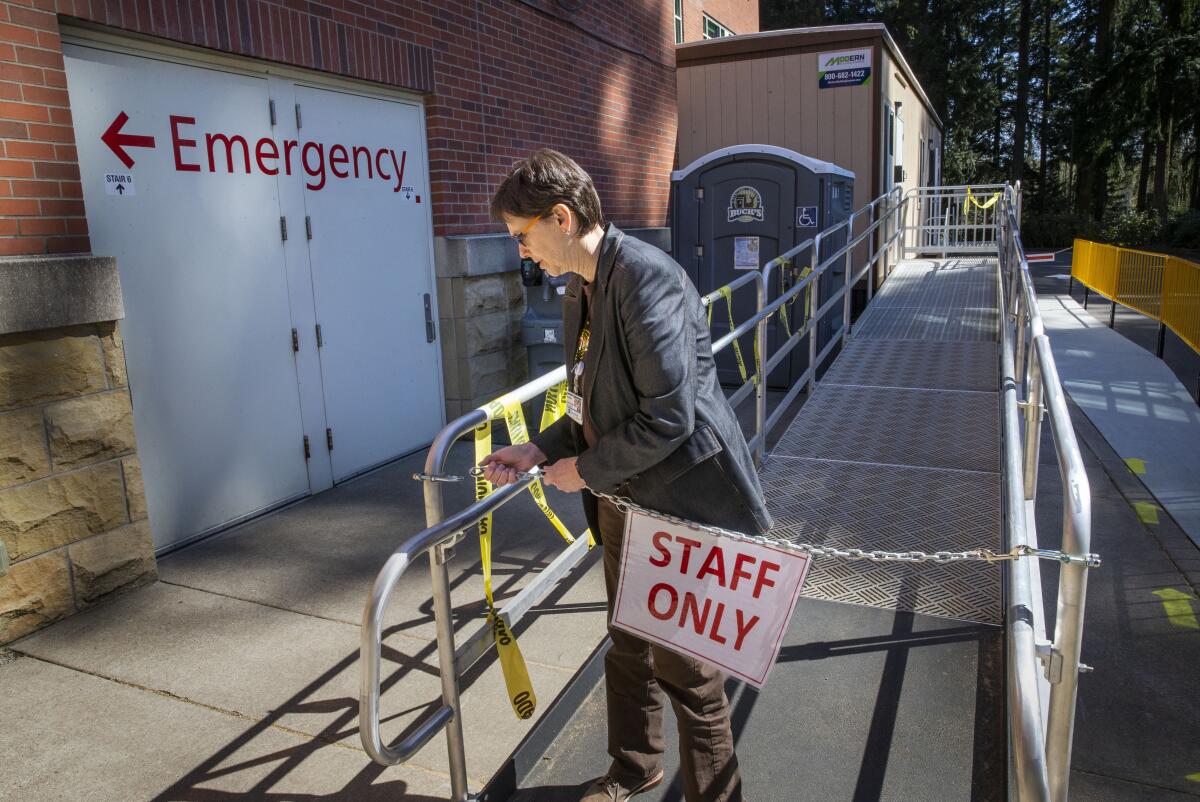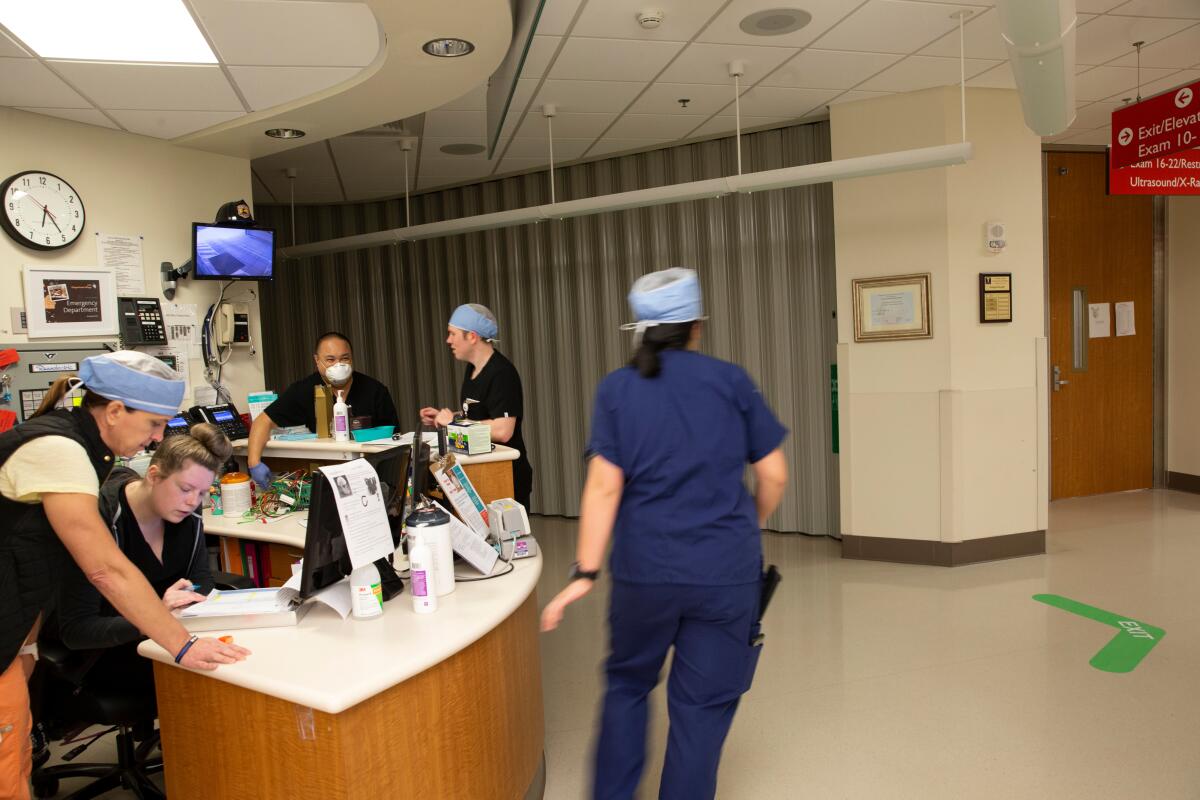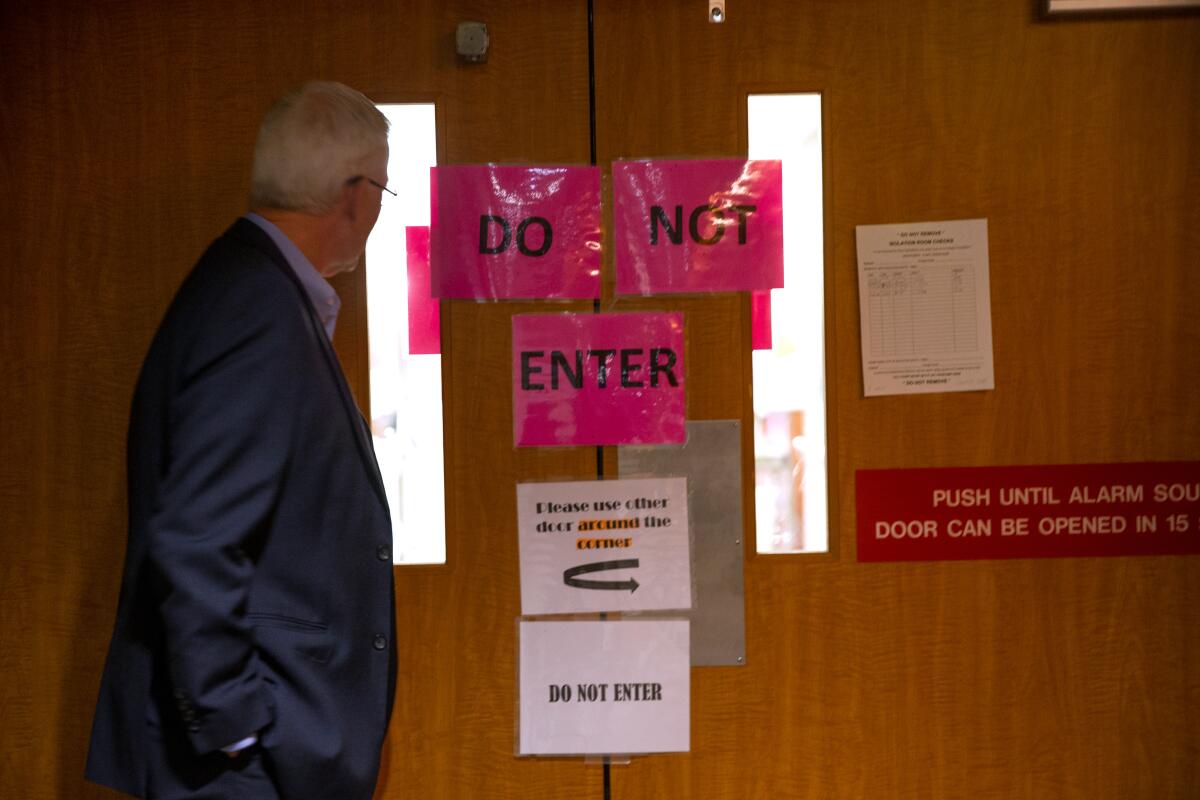Cash-strapped rural hospitals face ‘imminent closure’ as coronavirus bears down

- Share via
SEATTLE — Rural hospitals across the Pacific Northwest that were already struggling financially have seen steep declines in business this month, shunned by patients who fear exposure to the coronavirus as it spreads from urban areas.
Emergency rooms have been eerily quiet. Many operating rooms went dark last week after the governors of Washington and Oregon halted most elective surgeries to conserve precious masks, gowns and other protective equipment.
But instead of enabling them to prepare for an expected surge in COVID-19 patients, the hospitals say, the lull threatens to bankrupt them.
In Washington, at least 13 rural hospitals have less than 45 days of cash on hand and five of them face imminent closure, according to Cassie Sauer, chief executive of the Washington State Hospital Assn.
“The health care delivery system in Washington state is at a crisis point as result of the COVID-19 outbreak,” association leaders wrote Friday in a letter to Gov. Jay Inslee requesting at least $40 million in grants for hospitals in “extreme financial distress.”
“We expect certain hospitals to close if funding is not provided,” the letter said.
Cash shortages have also prevented the hospitals from stocking up on the badly needed protective equipment, which is expensive and difficult to find even for better-financed urban hospitals.
The non-urgent procedures that the governors canceled pay the bills for many facilities, which often have fewer than two dozen beds. Some hospitals are now planning layoffs.
Rural hospitals across the United States were in trouble long before the coronavirus, partly because people in the countryside tend to be sicker, older and poorer than Americans as a whole — hence more expensive to treat. Nearly 100 have closed since 2010, victims of rural flight, workforce shortages and government payments that reimburse less than private insurers.
Now many rural hospitals appear woefully unprepared to deal with a pandemic that few parts of the United States are expected to escape.
“You’re very quickly starting to see rural counties light up on the map, and it’s probably a misconception that rural America is going to be spared,” said Alan Morgan, CEO of the National Rural Health Assn., in Washington, D.C.
The virus was first detected in the United States on Jan. 20, when a 35-year-old man tested positive in Everett, Wash., after returning from Wuhan, China.
The Seattle area became the early U.S. epicenter with a nursing home outbreak that killed 35, and more cases have popped up in ever more remote Washington counties. The death toll in Washington and Oregon has climbed to at least 135 — out of 926 nationwide.
In Gold Beach, a community of 2,300 on the southern Oregon coast, Ginny Williams, CEO of Curry Health Network, said this week that she was worried by the prospect of a rural surge.
But she had more immediate concerns. She said revenues at the health system and its crown jewel, the 18-bed Curry General Hospital, had dropped about 50% since elective procedures were halted.
“We will have to do some significant workforce reductions,” she said.

In Goldendale, a south central Washington community of 3,500, the Klickitat Valley Health public hospital district has seen revenues drop by half since elective procedures were halted last week, even as spending has increased to screen for the coronavirus and prepare for a COVID-19 surge.
“We need an infusion of cash,” said Leslie Hiebert, the district’s CEO.
She said the organization, which operates the 17-bed Klickitat Valley Hospital, would drain its coffers in less than a month without outside assistance.
The hospital has no intensive care unit and normally transfers patients needing ventilators to larger regional medical centers.
But in preparation for a surge in COVID-19 cases, managers have plans to temporarily add 23 standard beds and three ICU beds by reconfiguring existing space.
They would still need extra staff for those new rooms. In the meantime, they are checking to see how many nurses have ICU experience.
By Tuesday, testing at the hospital had turned up four cases of COVID-19 and 34 negative results.
Now test kits are running low. Heibert said a commercial lab that supplies them requested 50,000 from a manufacturer, received 10,000 and was able to send the hospital only five.
Greek Orthodox nuns in Goldendale and other volunteers are crafting homemade masks to donate to Klickitat Valley Hospital.
Away from the hospitals, rural doctors’ offices have also seen revenues plunge since non-urgent procedures were halted.
“Many physicians’ offices are on the brink of not being able to cover their payroll, rent or lease,” said Jennifer Hanscom, CEO of the Washington State Medical Assn.
Like the hospital association, the medical organization is seeking state legislation to see members through the crisis.
Hospitals everywhere are conserving equipment by reusing masks and other gear, as permitted by newly relaxed federal recommendations. Many are accepting donations of homemade face shields and masks used by construction companies.
On the Oregon coast, Samaritan Pacific Communities Hospital in Newport and Samaritan North Lincoln Hospital in Lincoln City have partnerships with urban medical centers that should provide them with more protective equipment, according to Dr. Lesley Ogden, the CEO for both.
“But my compatriots who run independent rural hospitals are at a huge disadvantage because they do not have the supply network or the connections to go out there and play with the big boys,” she said.

For now, big urban hospitals face the greatest immediate need. EvergreenHealth Medical Center, a 318-bed facility in the Seattle suburb of Kirkland, has cared for 177 COVID-19 patients, including 35 who died.
But as the caseload continues to surge, the hospital may need to transfer some patients to rural hospitals, said Dr. Ettore Palazzo, the hospital’s chief medical officer.
“The bottom line is, we’re all in this together,” he said.
More to Read
Sign up for Essential California
The most important California stories and recommendations in your inbox every morning.
You may occasionally receive promotional content from the Los Angeles Times.











